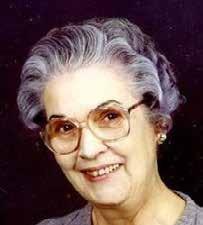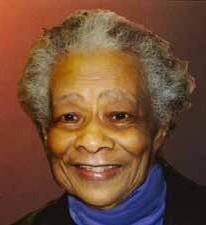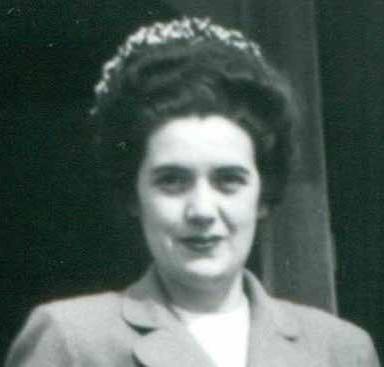Voices of Legacy: A Tale of Two Historians
- Apr 21, 2023
- 10 min read
Updated: Apr 25, 2023
Irene Butler Hebron and Isabel Shipley Cunningham
by the Northern Arundel Cultural Preservation Society (NACPS)
Some people in northern Anne Arundel County probably recognize the photo on the left and know the name of Isabel Shipley Cunningham. Other people probably recognize the photo on the right and know the name of Irene Butler Hebron. Surprisingly, both women were from the Dorsey/Harmans area; both had Master’s Degrees; both were teachers; both were members of the Northern Arundel Cultural Preservation Society, and together they are considered two of the most significant historians of Northern Anne Arundel County.
The tale of these two historians begins with their earliest years spent in northern Anne Arundel County, but their young adult lives eventually took them away from that area, at least for a while. Isabel Shipley Cunningham, the daughter of Marvin and Claudine Welsh Shipley, was born in St. Agnes Hospital in Catonsville on April 15, 1919, and raised on her father’s ancestral family farm in Harmans. Her first two years of school were at Harmans White Elementary School, a very old school which had eight grades in one room, only one teacher, no running water, but a well and outhouse. After her first two years at that location, a school bus took her to the three-room, eight-grade Jessup Elementary School. Finally, she graduated from Glen Burnie High School in 1935, and from Goucher College in Baltimore in 1939. After her marriage to Chipman Woodward Cunningham, a future lawyer, in 1943, Shipley continued her education and received her M.A. from Smith College in 1945.
Eight years after the birth of Isabel Shipley, Irene Butler, the daughter of Howard and Blanche Butler, was born at home on January 5, 1927, in Dorsey, MD. She attended Harmans School, a Rosenwald school,1 on Dorsey Road in Harmans, Maryland, and she graduated from Wiley H. Bates High School in 1944. Bates High School was an integral part of north county history because it was the only high school for African Americans throughout Anne Arundel County from 1933 until 1966. After high school, Irene Butler graduated from Bowie State Teachers College in 1948. Then, in 1954, Butler married Frank Hebron, a fellow educator; and in 1956, she received her Master’s Degree from Columbia University Teachers College.
With their educations completed and their domestic lives established, both historians returned to Anne Arundel County to establish their careers. Irene Butler Hebron taught in the Anne Arundel County Public School System for 35 years. She began teaching in 1948, at Marley Neck Elementary School, a two-room Rosenwald School, which was a wooden building with no indoor plumbing. From September of 1957 to June 1958, Mrs. Irene Hebron taught all first graders at Marley Neck Elementary School. From September of 1958 until the spring of 1959, Mrs. Hebron taught the second graders at the Marley Neck Elementary School. In the spring of 1959, students from the three Rosenwald schools in the area (Freetown, Magothy, and Marley) moved from their schools to Freetown Elementary School, newly built in 1958. At the Freetown School, Mrs. Henderson taught all second graders, and Mrs. Hebron taught all third graders. One of Mrs. Hebron’s students at Marley Neck Elementary School and Freetown Elementary School was Tony Spencer, whose ancestors founded Freetown. Spencer, explained, “During that era, Mrs. Hebron was among those educators who would visit your home to meet and talk with parents about their children preparing to enter school for the coming fall. When Mrs. Hebron taught at Marley Neck Elementary School, she taught all students in the first through third grades. These students were in the same classroom because of the layout of the Rosenwald school facility and the number of students in each grade: first, second and third grades, on one side of the building and the fourth, fifth and sixth grades on the other side.”
The first African American to be appointed to the District Court of Maryland, Anne Arundel County, Judge Clayton Greene Jr., currently the Senior Judge of the Maryland Court of Appeals, Maryland’s Supreme Court, was another one of Mrs. Hebron’s students. He maintained Mrs. Hebron was everybody’s favorite teacher. He also affirmed that she encouraged, motivated, and supported her students, prepared them to be self-supporting, and provided a listening ear if they were going through personal problems. In 1959, when Judge Greene was in third grade at Freetown Elementary School, Mrs. Hebron invited Dr. Aris T. Allen, African American physician and future politician in Anne Arundel County, to speak to the class. To this day, Judge Greene still remembers a motto Dr. Allen recited: “Good, better, best. Never let it rest until your good becomes better and your better becomes best.” Judge Greene declared Mrs. Hebron had such an impact on him that he invited her to attend all of his investitures, the swearing in ceremonies for his court appointments.
In 1962, Irene Butler Hebron was one of eight teachers to integrate Anne Arundel elementary schools, being assigned to Meade Heights, on the army post at Fort George G. Meade.2 After retiring from Meade Heights in 1983, Mrs. Hebron taught Adult Basic Education for 13 years.
While Mrs. Hebron focused on teaching at the elementary level, Isabel Shipley Cunningham made secondary education her goal. She taught social studies at Southern High School in Lothian; and both English, her favorite subject, and social studies at Glen Burnie High School in Anne Arundel County, as well as social studies at Catonsville High School in Baltimore County. In the 1970’s, she substitute-taught regularly at Annapolis High School.
Long-time Pasadena resident Henry Schmidt, now 87 years old, was Isabel Shipley Cunningham’s student when she taught at Glen Burnie High School. He believed he was a smart kid who knew everything, until his first six weeks with Mrs. Cunningham, who gave him a failing grade of “E.” However, he quickly explained, “The second six weeks I got an A-; she got my attention.”3 Henry Schmidt credits Mrs. Cunningham with interesting him and turning him around academically. He was delighted half a century later to meet Mrs. Cunningham again, this time offering his memories and old snapshots for her book Between Two Rivers: A Panoramic View of the Pasadena Peninsula (1999), which was about the history of Pasadena, Maryland and was published by the Pasadena Business Association. Mr. Schmidt was also happy to report that his granddaughter was the first recipient of the Pasadena Business Association’s Isabel Shipley Cunningham Scholarship.
Religion was important to both of these women. Irene Butler Hebron was a life-long member of St. Mark United Methodist Church in Dorsey, MD. She was coach of the church’s drama club for 50 years, secretary of the church’s administrative board, as well as being the church historian.
Isabel Shipley Cunningham joined Calvary United Methodist Church in Annapolis, MD in 1983, following lifelong membership in other churches near where she lived. Her 1984 book, Calvary United Methodist Church, Annapolis, Maryland: The First Two Centuries, was co-researched and co-authored by Mianna Schoenfelder Jopp. In 2010, the same church published Calvary United Methodist Church: Our 225- year Heritage of Methodism in Annapolis, with Isabel as the author who also researched the work. She was deeply interested in outreach, including the efforts of United Methodist Women.
Despite their separate lives throughout their early years, it was their interest in Anne Arundel County history that eventually brought these two women closer together. Irene Butler Hebron spent 55 years capturing the culturally rich history of her communities. She collected documents, official records, land deeds, photos and other artifacts that vividly illustrated the lifestyles of African Americans in North County, especially the communities of Marley Neck, Matthewstown, Matthews Park, Queenstown, Sewelltown, Bacon Town, Cedar Hill, Freetown, Furnace Branch, Galloway Town, and Pumphrey. In 2004, as historian of St. Mark United Methodist Church, Irene was joined by interested church and community members who helped her transform her passion of collecting historical nuggets into a major research project.4 The result was a carefully researched and preserved story, presented in two book formats, told through oral history recordings, sewn into 25 community story quilts and painted in a community mural, of 150 years of African American life in northern Anne Arundel County.5 The two books are:
Trails, Tracks, Tarmac: Lives of African Americans in the History and Culture of Northern Anne Arundel County1850 to the Present (2008).
Trails, Tracks, Tarmac: African American Narrative Quilts from Anne Arundel County, Maryland (2008).
In similar fashion, Isabel Shipley Cunningham spent decades researching and writing the history of Anne Arundel County, especially her native northwestern region. She wrote dozens of main articles for the Ann Arrundell History Notes, particularly regarding Harmans, herhomevillage, andtheneighboringareathat eventually became Baltimore Washington International Thurgood Marshall Airport. Her books include:
Between Two Rivers: A Panoramic View of the Pasadena Peninsula (1999).
The Pasadena Peninsula: A Closer Look at the Land Between Two Rivers (2001).
Before BWI Friendship: From Forest and Field to Flight (2003).
Joyful in the Lord: A History of Wesley Grove Camp Meeting, With an Account of Events at Wesley Grove’s Memorable Predecessor, the Camp Meeting at Shipley’s Woods, 1866 (1996).
Isabel’s long-time dream was to research and write a scholarly book. Her first volume, Frank N. Meyer: Plant Hunter in Asia, published by Iowa State University Press, in 1984, met that standard. Over the decades, numerous periodicals published her researched articles regarding horticulture and ornamental gardening; Methodist history; 3-dimensional, very miniature Japanese art; world-wide agricultural exploration; the discovery of plant-root-sourced progesterone; our contemporary, agribusiness-driven loss of genetic diversity in food crops; and other topics.
Finally, in 2005, Irene Butler Hebron’s collection of documents and her passion for the history of African Americans in Northern Anne Arundel County provided the foundation for the creation of the Northern Arundel Cultural Preservation Society (NACPS), a 501 (c) (3) nonprofit organization committed to capturing, preserving and sharing the story of African Americans in the history of northern Anne Arundel County. Irene explained that she “never dreamed that (her) collection and the research effort would reach so far.”
The interests of the two historians in the history of Anne Arundel County finally converged when Isabel Shipley Cunningham’s book The Pasadena Peninsula included a significant amount of African-American history.6 Her daughter Deborah explained, “There was so little Black history mixed into the official local and other histories. She was open and excited about filling in the missing pieces. History was never complete without it.” Isabel also became a member of the Northern Arundel Cultural Preservation Society and a consulting editor on the book Trails, Tracks, Tarmac: Lives of African-Americans in the History and Culture of Northern Anne Arundel County, 1850 to the Present.7 She also worked with Edward Sewell to write an article, published in the Maryland Gazette in 2004, concerning Nicholas Matthews, an African- American born in approximately 1875, who worked on the Shipley farm and eventually founded his own neighboring community, Matthewstown, in 1904.8
“Mrs. Irene” and “Mrs. Isabel”, as they are affectionately and often called, were bound together in varied ways. Particularly during their later years and because of the formation of the Northern Arundel Cultural Preservation Society. The two were brought together in planning meetings and as historical resources in the building of the “Trails, Tracks, Tarmac” exhibition and the subsequent writing of NACPS’ two books. Both historians were escorted to the exhibit at Banneker- Douglass Museum for a private, pre-opening tour. Towards the end of the two-hour tour, they conveyed their mutual pride in the exhibit’s appearance and authenticity. They were especially amused that they shared the same historical knowledge about many of the community members.
During the course of the “Trails, Tracks, Tarmac” exhibit, a Fireside Chat evening was planned, where both historians were featured, sharing the common history of their birthplaces, one mile apart, school days and teaching experiences. Both were thrilled to have former students or younger community members who came to honor the positive influence on their lives.
On another special occasion that proved to be a highlight for both historians, they were taken on a driving tour of many Northern Anne Arundel County communities. Mrs. Irene proudly pointed to the various communities where she had lived, attended or taught school and visited for various church or community activities. Conversely, Mrs. Isabel was saddened by the absence of her childhood home site, her home church and school, all having been overtaken by the building of the original Friendship Airport, today’s Baltimore Washington International Thurgood Marshall Airport, and other commercial enterprises.
These and many other occasions provided a salient base for these two “Culture Keepers” to exert their influence on many community efforts and promote preservation of history that boldly asserts the truth of “One Anne Arundel County/One Maryland” history.
When Irene Butler Hebron died on February 23, 2012, and Isabel Shipley Cunningham died on April 18, 2014, the Anne Arundel County community lost two great women: educators and historians. Mrs. Irene and Mrs. Isabel left a legacy that must be continued by other members of the community. May we proudly carry on their tradition!
Download Full Publication - Anne Arundel County History Notes Vol.XLVIV No. 4
Endnotes
1. For more information on the Rosenwald Schools, see: Trails, Tracks, Tarmac: Lives of African Americans in the History and Culture of Northern Anne Arundel County 1850 to the Present (pp. 36-37).
2. For more information on the integration of the schools in Anne Arundel County, see the books and articles by Philip L. Brown, Carol Bowers, and Nelson Hernandez.
3. Interviews with Henry Schmidt and Read, Zoe. “Historian, author Isabel Shipley Cunningham dies at age 95.” Capital Gazette. April 26, 2014. http://www.capitalgazette.com/cg2-arc-140426gn-isabel-- 20140426-story.html. Accessed December 27, 2016.
4. Mack, Betty. “Voices of Legacy: Irene Butler Hebron: A historian’s passion is alive.” Maryland Gazette. February 5, 2011.
5. Ibid.
6. Read, Zoe. “Historian, author Isabel Shipley Cunningham dies at age 95.” Capital Gazette. April 26, 2014. http://www.capitalgazette.com/cg2- arc-140426gn-isabel--20140426-story.html. Accessed December 27, 2016.
7. Ibid.
8. Ibid.
References
Bowerman, Hayley Gable. “Isabel Shipley Cunningham, Author Of Pasadena History Books, Passes Away At Age 95.” Pasadena Voice. May 15, 2014. http://www.pasadenavoice.com/community/isabel-shipley- cunningham-author-pasadena-history-books-passes-away-age-95.
Accessed December 27, 2016.
Bowers, Carol. L. “Philip L. Brown has the long view of Anne Arundel’s schools and racial integration.” Baltimore Sun. February 12, 1995. http://articles.baltimoresun.com/1995-02-12/news/1995043086_1_ arundel-county-anne-arundel-school-system. Accessed December 25, 2017.
Brown, Philip L. A Century of ‘Separate but Equal’ in Anne Arundel County. Vantage Press 1st edition. August 1, 1987.
Capital Gazette. Obituary of Irene Butler Hebron. February 29, 2012. http://www.legacy.com/obituaries/capitalgazette/obituary.
aspx?n=irene-hebron&pid=156181927. Accessed December 28, 2016.
Cunningham, Deborah. Email Correspondence. May 17, 2017; November 29, 2017; January 18, 2018.
Cunningham, Isabel Shipley. Between Two Rivers: A Panoramic View of the Pasadena Peninsula. Pasadena, MD: Pasadena Business Association, 1999.
Cunningham, Isabel Shipley. The Pasadena Peninsula: A Closer Look at the Land Between Two Rivers. Pasadena, MD: Pasadena Business Association, 2001.
Greene Jr., Judge Clayton. Interview by Lynda Davis. May 25, 2017. Hebron, Irene Butler. Biography. 2007.
Hernandez, Nelson. “Integration Slow in Coming but Local Enactment of Supreme Court Schools Decision Was Mostly Smooth.” Washington Post. May 13, 2004. http://www.washingtonpost.com/wp-dyn/articles/
A20903-2004May12.html. Accessed December 25, 2017.
Mack, Betty. “Voices of Legacy: Irene Butler Hebron: A historian’s passion is alive.” Maryland Gazette. February 5, 2011.
Northern Arundel Cultural Preservation Society, Inc. (NACPS).
Trails, Tracks, Tarmac: Lives of African Americans in the History and Culture of Northern Anne Arundel County 1850 to the Present. Hanover, Maryland: NACPS, 2008.
Northern Arundel Cultural Preservation Society, Inc. (NACPS). Trails, Tracks, Tarmac: African American Narrative Quilts from Anne Arundel County, Maryland. Hanover, Maryland: NACPS, 2008.
Read, Zoe. “Historian, author Isabel Shipley Cunningham dies at age 95.” Capital Gazette. April 26, 2014. http://www.capitalgazette.com/ cg2-arc-140426gn-isabel--20140426-story.html. Accessed December 27, 2016.
Schmidt, Henry. Interviews by Lynda Davis. December 3, 2017 and January 13, 2018.
Spencer, Tony. Email Correspondence.







Comments